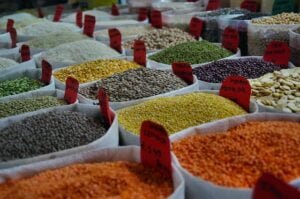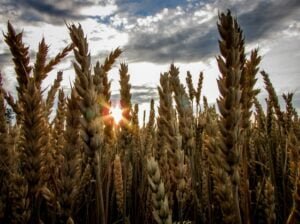
The Union Government is not sitting on its laurels, complacent at achieving a record output of food grain production in the country; it’s aiming to scale the figure in future. Besides meeting the continuous supply of the country’s needs, the aim is to successfully fulfill the world’s food supply demand.
India is in a very good position in terms of food grain production, according to Union Agriculture and Farmers Welfare Minister Narendra Singh Tomar. “This has been achieved due to the farmer-friendly policies of the Government under the leadership of Prime Minister Narendra Modi, tireless hard work of farmers and novel research by agricultural scientists,” he said recently.
As per the Second Advance Estimates for 2022-23, released mid-February, the total food grain production in the country is estimated at a record 3,235.54 lakh tones, which is higher by 79.38 LMT as compared to previous year 2021-22.

All-time high output
The total production of rice during 2022-23 is estimated to be all-time high of 1,308.37 lakh tones, 13.65 lakh tones higher as compared to previous year. The production of wheat is also likely to create a record at an estimated 1,121.82 LMT, which is higher by 44.40 LMT as compared to previous year’s production.
However, Tomar reminded participants at a National Conference on Agriculture for Zaid (Summer) Campaign-2023 in New Delhi, “While agriculture is important, it is also an area of greater caution and responsibility. There was a time when little progress was taken for granted and the country depended on others for food grains.” He added, “we have to increase production and productivity as well as improve quality so that we can meet the global standards.”
The minister shared that many concrete steps have been taken for the development of the agriculture sector, and that the states are also cooperating in these initiatives. As a result, a bumper crop is expected in the current agricultural year. The assessment of food crop production is based on the feedback received from states and validated with information available from other sources.

Cereals and pulses
According to the estimates, production of nutri/coarse cereals is to record 527.26 lakh tones, which is higher by 16.25 lakh tones than the previous year’s production. Maize and barley are expected to touch a record production of 346.13 lakh tones and 22.04 lakh tones, respectively.
Meanwhile, estimated at 278.10 lakh tones, production of total pulses during this time will also be higher. This is higher by 5.08 lakh tones than previous year’s production of 273.02 LMT and 31.54 LMT higher than the average pulses production of the last five years.
Total oilseeds production in the country during 2022-23 is estimated at record 400.01 lakh tones, which is higher by 20.38 lakh tones than the previous year’s oilseeds production. Incidentally, the Government has been making an effort at further increasing domestic production of oilseeds.
The Second Advance Estimates for 2022-23 put total production of sugarcane in the country during 2022-23 at another record of 4,687.89 lakh tones. The production of sugarcane during 2022-23 is higher by 293.65 lakh tones than the previous year’s production.
Meanwhile, in order to better their output, the Centre is encouraging farmers to consider adopting other available alternatives to chemical fertilizers, like nano urea, biofertilizer, etc. About Rs. 2.5 lakh crore is being incurred annually on fertilizer subsidy. Apart from saving this amount, healthy production can be achieved, and individual health can also be ensured.

Steps for small farmers
States are being urged to focus on the progress of small farmers through measures like Pradhan Mantri Kisan Samman Nidhi. Focus is also on Krishi Vigyan Kendras (KVK) to work together with Agricultural Technology Management Agency (ATMA) at the district level to bring about rejuvenation.
ATMA is a society of key stakeholders involved in agricultural activities for sustainable agricultural development in the districts. Apart from KVKs, it also has active participation of farmers, farmer groups, NGOs, Panchayati Raj Institutions, besides other stakeholders operating at district level and below.
In addition, the Government is also working on the Digital Agriculture Mission that aims to encourage and speed up projects based on cutting-edge technologies, including AI, blockchain, remote sensing, robots, and drones.




